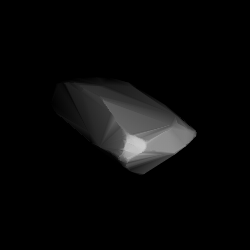
881 Athene is a stony background asteroid from the central region of the asteroid belt. It was discovered on 22 July 1917, by astronomer Max Wolf at the Heidelberg-Königstuhl State Observatory in southwest Germany. The likely elongated S/L-type asteroid has a rotation period of 13.9 hours and measures approximately 12 kilometers in diameter. It was named after Athena, the goddess of wisdom in Greek mythology.

1021 Flammario, provisional designation 1924 RG, is a dark background asteroid from the central regions of the asteroid belt, approximately 100 kilometers in diameter. It was discovered on 11 March 1924, by German astronomer Max Wolf at the Heidelberg-Königstuhl State Observatory in Heidelberg, Germany. The asteroid was named after French astronomer Camille Flammarion. The uncommon F-type asteroid has a rotation period of 12.16 hours.
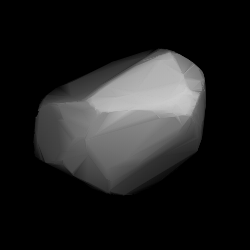
1088 Mitaka is a bright background asteroid from the inner regions of the asteroid belt. It was discovered on 17 November 1927, by Japanese astronomer Okuro Oikawa at the old Tokyo Astronomical Observatory in Japan. The stony S-type asteroid has a notably short rotation period of 3.0 hours and measures approximately 15 kilometers in diameter. It was named after the Japanese village of Mitaka.

1103 Sequoia is a bright Hungaria asteroid from the innermost region of the asteroid belt, approximately 7 kilometers in diameter. It was discovered on 9 November 1928, by German astronomer Walter Baade at the Bergedorf Observatory in Hamburg, Germany, who named it after the Sequoia National Park located in California.
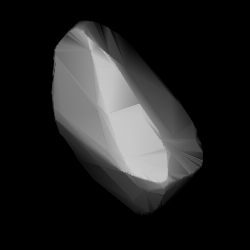
1119 Euboea is a background asteroid from the central region of the asteroid belt. It was discovered on 27 October 1927, by German astronomer Karl Reinmuth at the Heidelberg-Königstuhl State Observatory in southwest Germany. The asteroid has a rotation period of 11.4 hours and measures approximately 30 kilometers in diameter. It was named for the Greek island of Euboea.
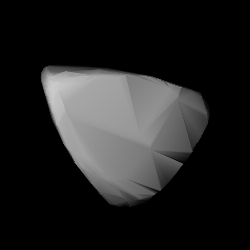
1150 Achaia ; prov. designation: 1929 RB) is a stony background asteroid from the inner regions of the asteroid belt. It was discovered by Karl Reinmuth at Heidelberg Observatory on 2 September 1929. The S-type asteroid has a notably long rotation period of hours 61 hours and measures approximately 7.8 kilometers in diameter. It is named for the Greek region of Achaia.

1665 Gaby, provisional designation 1930 DQ, is a stony asteroid and a relatively slow rotator from the inner regions of the asteroid belt, approximately 11 kilometers in diameter. It was discovered on 27 February 1930, by German astronomer Karl Reinmuth at Heidelberg Observatory in southern Germany. It was later named after Gaby Reinmuth, the discoverer's daughter-in-law.

1672 Gezelle, provisional designation 1935 BD, is a carbonaceous asteroid from the outer region of the asteroid belt, approximately 27 kilometers in diameter. It was discovered on 29 January 1935, by Belgian astronomer Eugène Delporte at Royal Observatory of Belgium in Uccle, Belgium. It was later named after Flemish poet and Roman Catholic priest Guido Gezelle.

1188 Gothlandia, provisional designation 1930 SB, is a stony Florian asteroid from the inner regions of the asteroid belt, approximately 12 kilometers in diameter. Discovered by astronomer Josep Comas i Solà at the Fabra Observatory in 1930, the asteroid was later named after the ancient name of the Spanish autonomous community of Catalonia.

4265 Kani is a dark background asteroid from the inner regions of the asteroid belt. It was discovered by Japanese astronomers Yoshikane Mizuno and Toshimasa Furuta at Kani Observatory on 8 October 1989. The carbonaceous C-type asteroid has a rotation period of 5.7 hours and measures approximately 14 kilometers in diameter. It was named for the Japanese city of Kani.
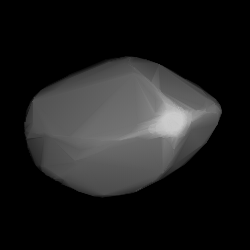
1379 Lomonosowa is a stony background asteroid from the central regions of the asteroid belt, approximately 19 kilometers in diameter. Discovered by Grigory Neujmin at the Simeiz Observatory in 1936, the asteroid was later named after Russian physicist and astronomer Mikhail Lomonosov.

1486 Marilyn, provisional designation 1938 QA, is a stony background asteroid from the inner regions of the asteroid belt, approximately 6.5 kilometers in diameter. It was discovered on 23 August 1938, by Belgian astronomer Eugène Delporte at the Royal Observatory of Belgium in Uccle. The asteroid was named after Marilyn Herget, daughter of astronomer Paul Herget.

1368 Numidia, provisional designation 1935 HD, is a stony background asteroid from the central regions of the asteroid belt, approximately 19 kilometers in diameter. It was discovered on 30 April 1935, by South African astronomer Cyril Jackson at the Union Observatory in Johannesburg. The asteroid was named after the ancient North African kingdom of Numidia.

1389 Onnie, provisional designation 1935 SS1, is a stony Koronian asteroid from the outer region of the asteroid belt, approximately 13 kilometers in diameter. It was discovered on 28 September 1935, by Dutch astronomer Hendrik van Gent at Leiden Southern Station, annex to the Johannesburg Observatory in South Africa.
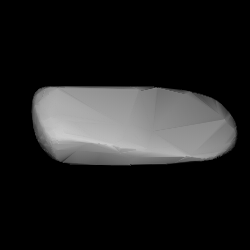
1192 Prisma, provisional designation 1931 FE, is an elongated Phocaea asteroid from the inner regions of the asteroid belt, approximately 7 kilometers in diameter. It was discovered by German astronomer Friedrich Schwassmann at the Bergedorf Observatory in Hamburg on 17 March 1931. The asteroid was named after the Bergedorf Spectral Catalogue, an astronomical catalog.
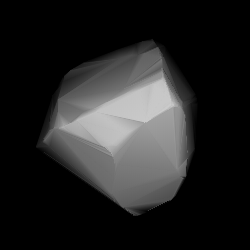
1204 Renzia is a stony asteroid and sizable Mars-crosser on an eccentric orbit from the inner regions of the asteroid belt, approximately 10 kilometers in diameter. It was discovered by astronomer Karl Reinmuth at the Heidelberg-Königstuhl State Observatory in southwest Germany on 6 October 1931. The asteroid was named after German-Russian astronomer Franz Renz.

1493 Sigrid, provisional designation 1938 QB, is a dark Nysian asteroid from the inner regions of the asteroid belt, approximately 24 kilometers in diameter. It was discovered on 26 August 1938, by Belgian astronomer Eugène Delporte at the Royal Observatory of Belgium in Uccle. It was named after Sigrid Strömgren, wife of astronomer Bengt Strömgren.

1312 Vassar, provisional designation 1933 OT, is a carbonaceous Alauda asteroid from the outer region of the asteroid belt, approximately 30 kilometers in diameter. It was discovered on 27 July 1933, by Belgian–American astronomer George Van Biesbroeck at Yerkes Observatory in Wisconsin, United States. The asteroid was named for the American Vassar College.
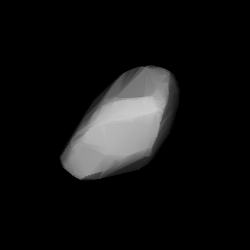
1339 Désagneauxa, provisional designation 1934 XB, is a stony Eoan asteroid from the outer region of the asteroid belt, approximately 24 kilometers in diameter. It was discovered on 4 December 1934, by French astronomer Louis Boyer at the North African Algiers Observatory in Algeria. A few nights later, the asteroid was independently discovered by astronomers Grigory Neujmin and Eugène Delporte, at the Crimean Simeiz and Belgian Uccle Observatory, respectively. It was later named after discoverer's brother-in-law.
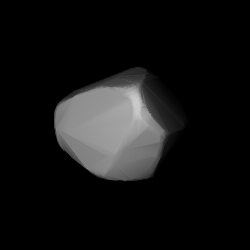
1623 Vivian is a carbonaceous Themis asteroid from the outer region of the asteroid belt, approximately 25 kilometers in diameter. It was discovered on 9 August 1948, by South African astronomer Ernest Johnson at Johannesburg Observatory in South Africa. It was named after Vivian Hirst, daughter of British astronomer William P. Hirst.




















